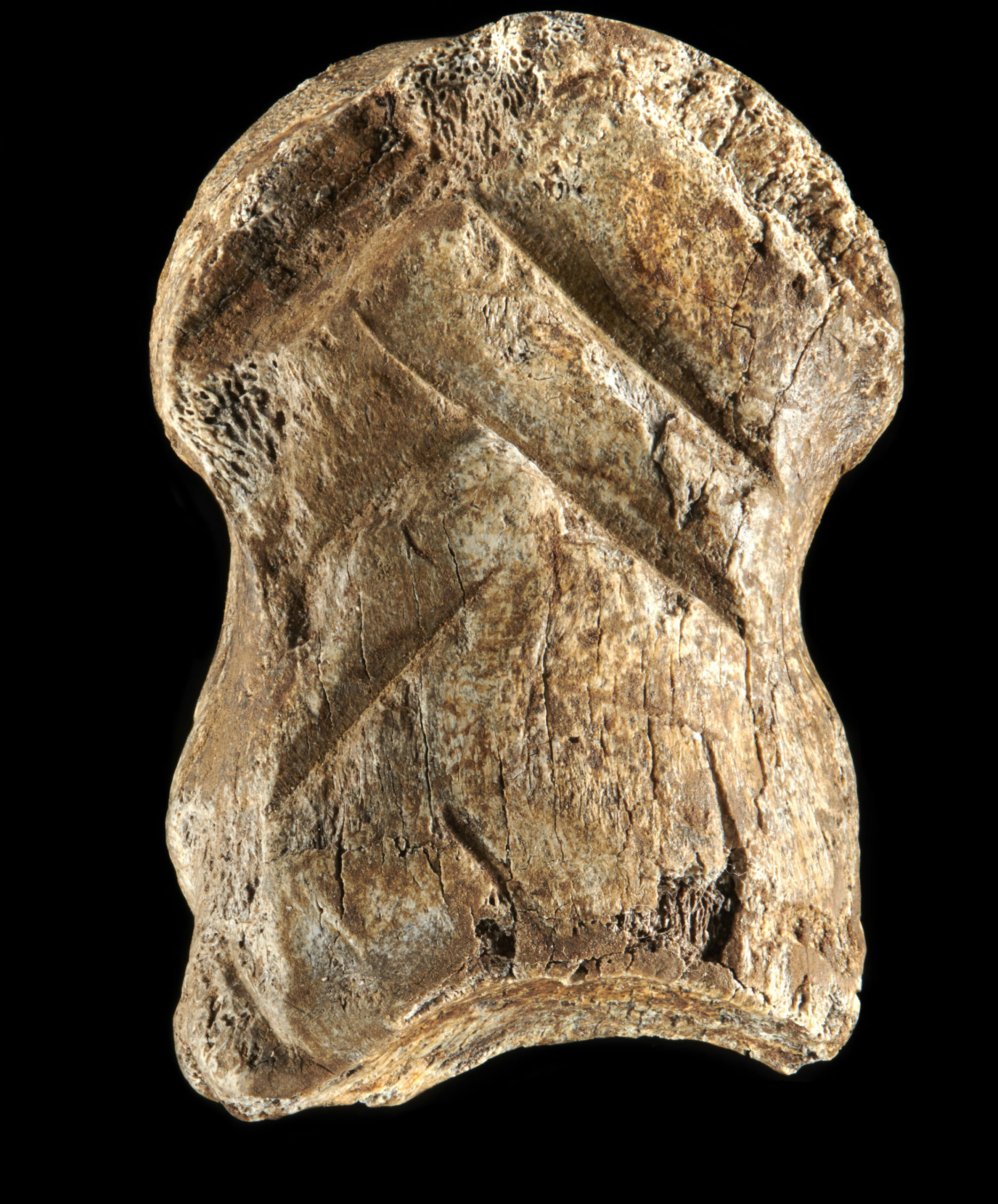
Archaeologists have uncovered a 51,000-year-old engraved giant deer phalanx in a cave in the Harz Mountains, Germany. The find, which came from an apparent Middle Paleolithic context that was linked to Neanderthals, demonstrates that conceptual imagination, as a prerequisite to compose individual lines into a coherent design, was present in our evolutionary cousins.
The engraved giant deer phalanx from a Late Middle Paleolithic context at Einhornhöhle, Lower Saxony, Germany. Image credit: Leder et al., doi: 10.1038/s41559-021-01487-z.
“Extensive debates surround the question of early hominins’ and Neanderthals’ cognitive capacities, particularly regarding the ability to create art and symbolic expressions,” said lead author Dr. Dirk Leder from the Lower Saxony State Office for Heritage and his colleagues from Germany.
“There is now considerable evidence for elaborate stone tool technology, manufacture of effective wooden weapons and bone tools.”
“Also, the production of birch tar adhesives and composite tools is attested for Neanderthals.”
“While there is little doubt that ‘symbolic behavior’ in Neanderthals has been underestimated in the past, for the moment it remains an open question to what extent complex expressions of symbolic behavior and art were present in Central Europe before the arrival of early homo sapiens.”
“Our findings contribute important new information to this discussion.”
The ancient engraved bone was found at the former cave entrance of Einhornhöhle (Unicorn Cave) in northern Germany.
“Einhornhöhle is a well-known Quaternary fossil site that has been frequented by treasure hunters since the Middle-Ages aiming to extract what they believed to be unicorn fossils,” the researchers said.
“During the 18th century, geologists, paleontologists, and later archaeologist became increasingly interested in Einhornhöhle due to abundant fossil finds.”
The incised bone was from the Irish elk (Megaloceros giganteus), also known as the giant deer, an extinct species of deer that lived during the Pleistocene epoch in Europe and Asia.
“Neanderthals carefully disarticulated the phalanx, probably from a hunted giant deer,” the scientists explained.
“In the next step, the phalanx was cleaned from tissue and probably boiled for some time, which required the use of fire for boiling.”
“After drying, the bone was carved, probably in a continuous process within c. 90 min, although a longer time span, e.g. over several days cannot be ruled out.”
“The giant deer second phalanx might have been collected, rather than obtained from a freshly hunted animal, and processed after some time of decay,” they added.
“Also, the presence of a further giant deer phalanx bone, as well as, giant deer teeth at the site, makes active hunting seem a more likely scenario.”
“It is probably no coincidence that the Neanderthal chose the bone of an impressive animal with huge antlers for his or her carving,” added co-author Professor Antje Schwalb, a researcher at the Technical University of Braunschweig.
The artifact from Einhornhöhle is at least 51,000 years old, and features inverted V’s in a chevron shape.
“The fact that the new find from Einhornhöhle dates from so long ago shows that Neanderthals were already able to independently produce patterns on bones and probably also communicate using symbols thousands of years before the arrival of modern humans in Europe,” said senor author Professor Thomas Terberger, a researcher at Göttingen University and the Lower Saxony State Office for Heritage.
“This means that the creative talents of the Neanderthals must have developed independently.”
“The bone from Einhornhöhle thus represents the oldest decorated object in Lower Saxony and one of the most important finds from the Neanderthal period in Central Europe.”
The team’s paper was published in the journal Nature Ecology and Evolution.
_____
D. Leder et al. A 51,000-year-old engraved bone reveals Neanderthals’ capacity for symbolic behaviour. Nat Ecol Evol, published online July 5, 2021; doi: 10.1038/s41559-021-01487-z
 #Bizwhiznetwork.com Innovation ΛI |Technology News
#Bizwhiznetwork.com Innovation ΛI |Technology News



